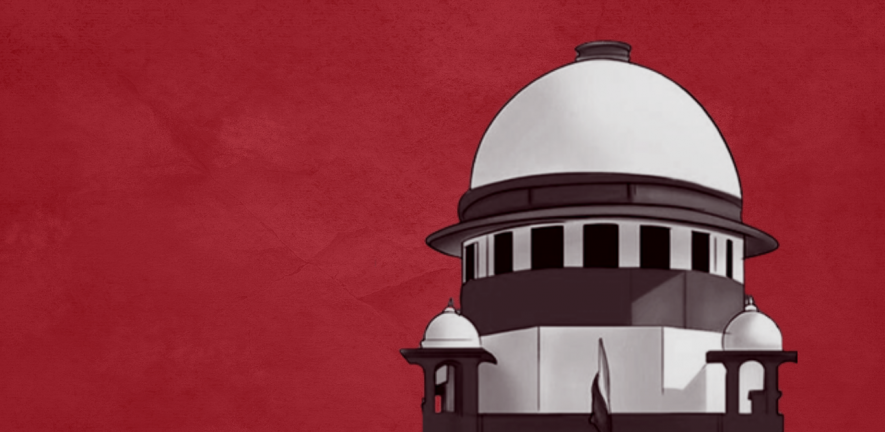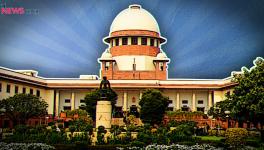Supreme Court’s Progressive Interpretation of Maternity Leave Provision is a Shot in the Arm for Working Women

“FAMILIAL relationships may take the form of domestic, unmarried partnerships or queer relationships”, a division bench of the Supreme Court comprising Justices Dr. D.Y. Chandrachud and A.S. Bopanna recently observed while granting maternity relief to the female appellant.
The appellant had already availed child care leave for her husband’s biological children from his first marriage. The Punjab and Haryana High Court refused to grant the appellant maternity leave because she had two surviving children. The high court was of the opinion that the appellant’s biological child should be considered her third child.
The Supreme Court, however, took a contradictory view and held that “[t]he fact that the appellant‟s spouse had two biological children from his first marriage would not impinge upon the entitlement of the appellant to avail maternity leave for her sole biological child.” Moreover, the court also observed that a family is widely interpreted as “a single, unchanging unit with a mother and a father (who remain constant over time) and their children. This assumption ignores both, the many circumstances which may lead to a change in one’s familial structure, and the fact that many families do not conform to this expectation to begin with.”
Question of law
The laws involved here are childcare leave and maternity leave provided under the Central Civil Services (Leave) Rules, 1972. Rule 43-C provides for childcare leave for a female government employee who has minor children below the age of 18 years. The leave is granted for a maximum period of two years (730 days) for taking care of not more than two children. Child care includes rearing or taking care of the child’s needs at the time of sickness and more under the law.
In its decision, the Supreme Court paid attention to the gendered roles and norms that pressure women into burdening the responsibility of unpaid domestic labour.
Rule 43 of the Rules grants maternity leave to a female government employee for a period of 180 days. The leave is granted to a woman who has less than two surviving children.
The high court, while rejecting the petition of the appellant to grant her maternity leave for her biological child, stated that since the appellant availed child care leave for the biological children of her husband from his first marriage, she would not be entitled to the maternity leave. After her marriage, she was considered to have two surviving children.
Purposive interpretation
Legislation enacted for the benefit of citizens must be interpreted liberally. This has been reiterated by the judiciary time and again. An Act which is not construed liberally will not achieve its objectives.
In the instance judgment, authored by Justice Dr. Chandrachud, the Supreme Court relied upon its judgment in K.H. Nazar versus Mathew K. Jacob & Ors. (2019), in which it was observed that when possible, the literal construction of beneficial legislation must be avoided, and the court must identify the intent of the legislation.
It also referred to its judgment in Badshah versus Sou. Urmila Badshah Godse & Anr. (2013), in which it was noted that the duty of the court is to understand the intent of the legislation and enable it to achieve its objective.
The Court’s observation that queer relationships form familial relationships is full of hope and acceptance. However, such observations by the Supreme Court will not provide any substantial relief to the LGBTQ+ community unless backed by encoded laws soon.
The provisions for childcare leave and maternity leave are both beneficial laws. The object and purpose of granting these leaves will be achieved only with their purposive interpretation. Granting maternity leaves under the Rules enables female employees to continue their employment.
A 2018 report titled ‘Predicament of Returning Mothers’ by Ashoka University’s Genpact Centre for Women’s Leadership revealed that half of all new mothers in India left their jobs, out of which only 27 per cent returned. Even after the existence of provisions such as childcare and maternity leaves, which enable women to return to their jobs, the number of women quitting their jobs after childbirth is relatively high. Therefore, if female employees are not granted these leaves and facilitative measures, these numbers will surely increase.
Also read: Making Gender Equality At Work A Justiciable Right For Women In The Private Sector
Unpaid labour of childcare
In its decision, the Supreme Court paid attention to the gendered roles and norms that pressure women into burdening the responsibility of unpaid domestic labour. Unpaid domestic labour also largely includes childcare.
According to a recent Lancet Public Health journal report, inequity in the division of unpaid work extracts a heavier toll on women’s mental health than it does on men. In the instant judgment, the Supreme Court also cited a survey by the Organisation for Economic Co-operation and Development that revealed that Indian women spend 352 minutes in a day on unpaid domestic labour, which is 577 per cent more than what men spend.
“Although certain provisions of the Rules of 1972 have enabled women to enter the paid workforce, women continue to bear the primary responsibility for childcare”, the court observed. Benefits such as maternity and paternity leaves and childcare leave are, therefore, essential. The Supreme Court observed that previously granting childcare leave to the appellant will not disentitle her from maternity leave under Rule 43 of the Rules.
Interpreting a ‘family’
The Court’s observation that queer relationships form familial relationships is not legally binding, being the obiter part of the judgment, but it is full of hope and acceptance.
However, such observations by the Supreme Court will not provide any substantial relief to the LGBTQ+ community unless backed by encoded laws soon. Further, the court observed that “these manifestations of love and of families may not be typical but they are as real as their traditional counterparts.” In India, honour and integrity are intricately woven with the idea of a family.
Not all queer people in a relationship can afford to get married. Some couples still have to pretend to be friends or siblings when they move together into their homes. Marriage, in queer relationships, still remains a privilege for the rich and the elite.
While the court’s observation that “such atypical manifestations of the family unit are equally deserving not only of protection under the law but also of the benefits available under social welfare legislation” sets a positive tone for the socio-legal acceptance of the LGBTQ+ community, there is still a lot of work to do at the ground level.
Get the latest reports & analysis with people's perspective on Protests, movements & deep analytical videos, discussions of the current affairs in your Telegram app. Subscribe to NewsClick's Telegram channel & get Real-Time updates on stories, as they get published on our website.
























